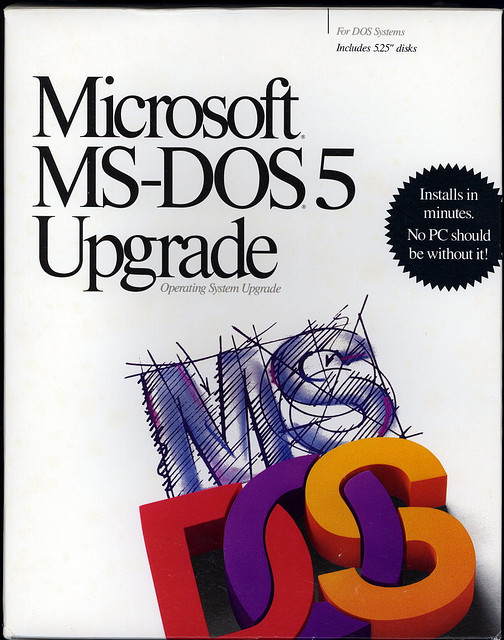The Importance of Location Independence
When I took Operating Systems in college, one of the concepts the
course covered was "location independence" in filesystems. A
filesystem is "location independent" if file paths do not reveal the
physical location of the file.
Microsoft Windows does not have location independence, since absolute
file paths have to begin with a drive letter. You know that
C:\WINDOWS is located on the
C:\ disk drive, just by
reading the path.
UNIX, on the other hand, does have location independence. You can't
figure out what drive
/usr/bin/ls is on just by reading the
path. In fact, it might not even be on a drive at all. Perhaps it is
on a ramdisk, or it is a network filesystem. You have to look at the
mount table to find out.
You could probably quibble with this distinction. You can reassign
drive letters in Windows, so that gives you a little bit of
independence. It's a clunky and little-used process, however. Also,
at least to my knowledge, you can't mount a filesystem within another
filesystem as you can with UNIX.
I never understood why my OS textbook spent so much time on this
concept. Wasn't it obvious that location independence was a good
thing?
Reinventing the C:\ Drive
As it turns out, not everyone got the memo about location independence.
People have continued to design systems where the path name contains
information about where the files are located.
One such system, unfortunately, is Hadoop. Hadoop doesn't use
UNIX-style paths. Instead, it uses "uniform resource locators"--
that's URLs, for short. URLs are better known as the thing you type
into your web browser. A path in the Hadoop Distributed Filesystem
might have a URL like
hdfs://example.com:6000/user/cmccabe/stuff/file.txt
URLs sound very modern and Web 2.0, but there's a big problem. That
very first part of the URL, the "scheme", is encoding the fact that we
are using
hdfs. The second part,
example.com:6000,
is called the "authority," for reasons that have something to do with
web browsers, and nothing to do with Hadoop. The "authority" encodes
which server and port we are using. Because we can learn the server
and the port from the path, we have lost location independence.
The problem with these URLs is that they expose things to the
application that would be better off hidden. Why should the
application care that the server is on port 6000 of
example.com? That should all be handled by a client-side mount
table.
Hadoop URLs have led to a lot of problems. For example, when we were
implementing HDFS high availability, we realized that there would no
longer be just one metadata server that the client needed to talk to.
The client needed to know the hostname and port of both the primary and
standby NameNodes. If one namenode was inaccessible, the client needed
to know where to find the other namenode. The obvious solution was to
put both of the hostnames into the authority. However, there was too
much legacy software parsing URLs. This legacy software expected to
see an authority of the form
hostname:port, and often would
misbehave or fail to work if it wasn't present. So we came up with a
hack. The authority would contain a fake hostname-- henceforth called
the namesystem id-- and optionally, a fake port which would be
ignored.
URLs also create problems for symlinks. Prior to symlinks being
introduced, software could assume that paths that started with
hdfs://example.com would access only files found on the HDFS
NameNode at
example.com However, what if
hdfs://example.com/foo is a symlink to
file:///secret.txt? Issues like this can be a big problem for
server processes that run with elevated privileges.
The "fun" doesn't end there. URLs have more fields that just
scheme,
authority, and
path. For example,
they also have
fragment, which is that thing that appears after
a hash mark. This and other extended URL fields are handled very
inconsistently in Hadoop. Some functions strip them off of the Paths
they're given. Others don't, passing them back to the user. This
creates compatibility headaches whenever you're dealing with path.
Did you change a function to strip off the fragment, whereas it didn't
before? You might break someone.
Parsing URLs is
a complex
task. The inefficiency, while galling, isn't the worst part. It's
the cognitive overhead for both developers and users of dealing with
all the corner cases in the spec. For example, how do you handle paths
that include metacharacters such as the pound sign and question mark?
And so forth. At least everyone know how to parse
C:\WINDOWS.
I sometimes wonder if anyone fully understands the URL parsing rules.
Conclusion
These problems are all the result of putting too much information about
HDFS's inner workings into the path. In my opinion, the path should
just be a plain old string containing path components separated by
slashes. We need to learn from the simplicity and elegance of UNIX,
not from the kludges of MS-DOS.
